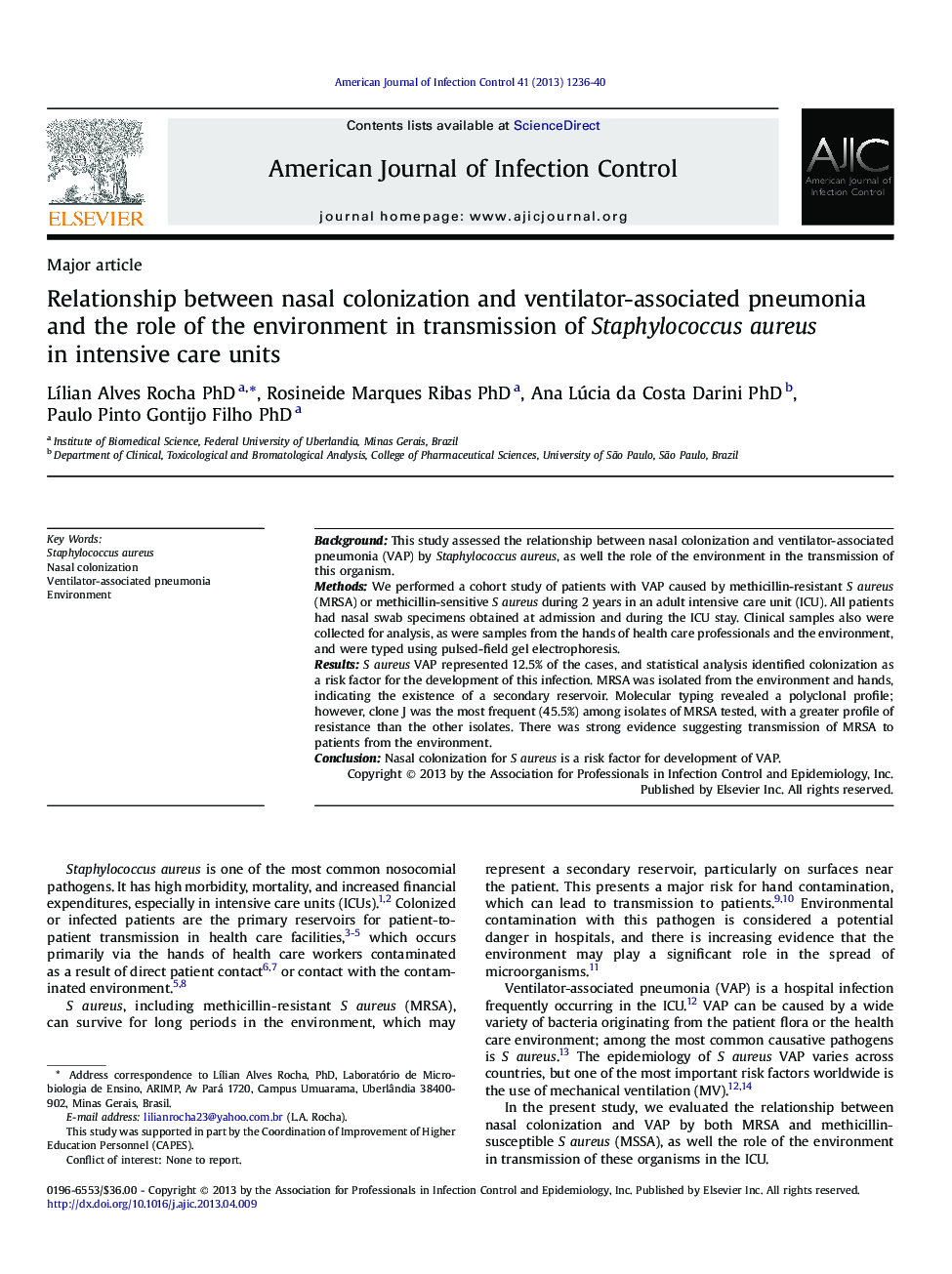| کد مقاله | کد نشریه | سال انتشار | مقاله انگلیسی | نسخه تمام متن |
|---|---|---|---|---|
| 2637112 | 1563492 | 2013 | 5 صفحه PDF | دانلود رایگان |

BackgroundThis study assessed the relationship between nasal colonization and ventilator-associated pneumonia (VAP) by Staphylococcus aureus, as well the role of the environment in the transmission of this organism.MethodsWe performed a cohort study of patients with VAP caused by methicillin-resistant S aureus (MRSA) or methicillin-sensitive S aureus during 2 years in an adult intensive care unit (ICU). All patients had nasal swab specimens obtained at admission and during the ICU stay. Clinical samples also were collected for analysis, as were samples from the hands of health care professionals and the environment, and were typed using pulsed-field gel electrophoresis.ResultsS aureus VAP represented 12.5% of the cases, and statistical analysis identified colonization as a risk factor for the development of this infection. MRSA was isolated from the environment and hands, indicating the existence of a secondary reservoir. Molecular typing revealed a polyclonal profile; however, clone J was the most frequent (45.5%) among isolates of MRSA tested, with a greater profile of resistance than the other isolates. There was strong evidence suggesting transmission of MRSA to patients from the environment.ConclusionNasal colonization for S aureus is a risk factor for development of VAP.
Journal: American Journal of Infection Control - Volume 41, Issue 12, December 2013, Pages 1236–1240